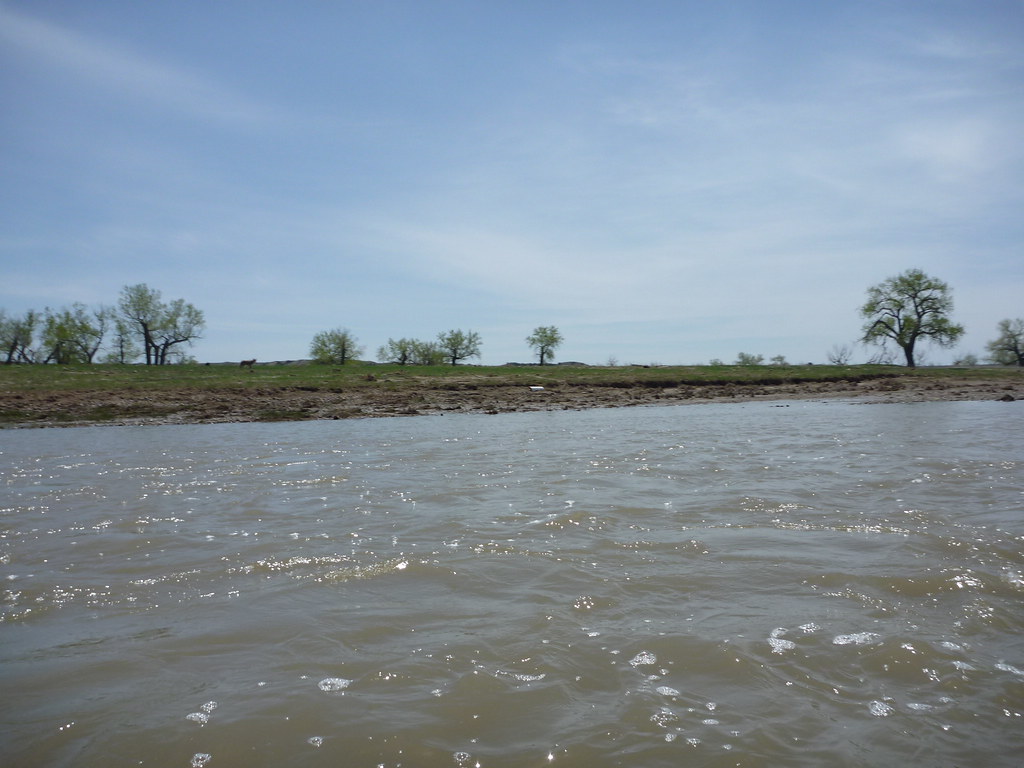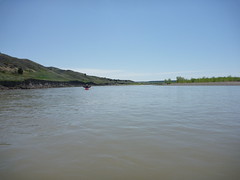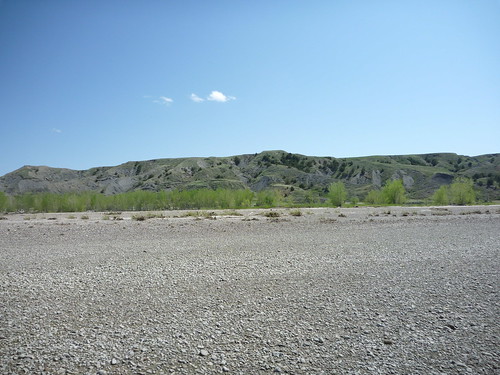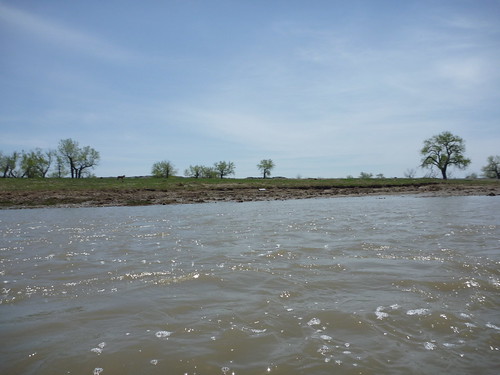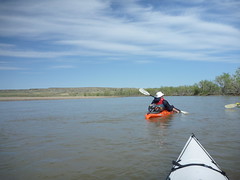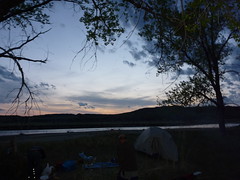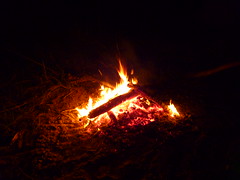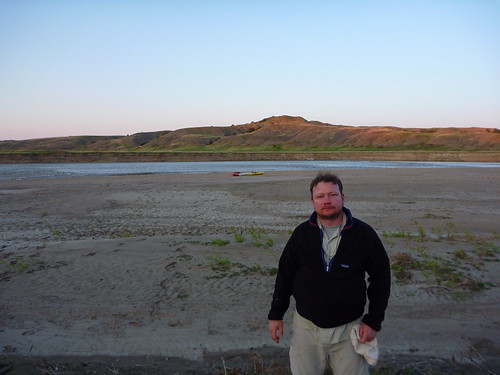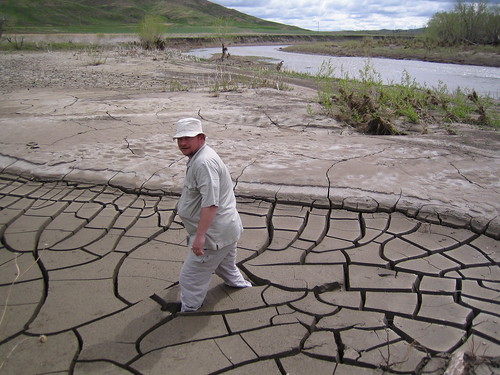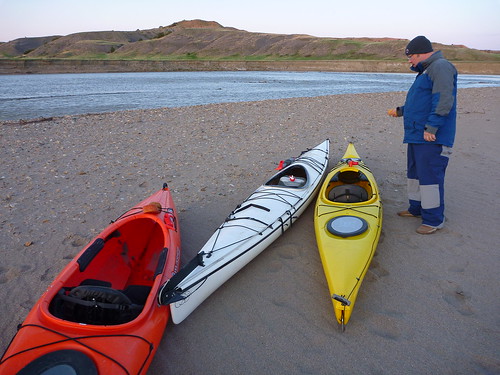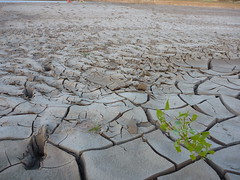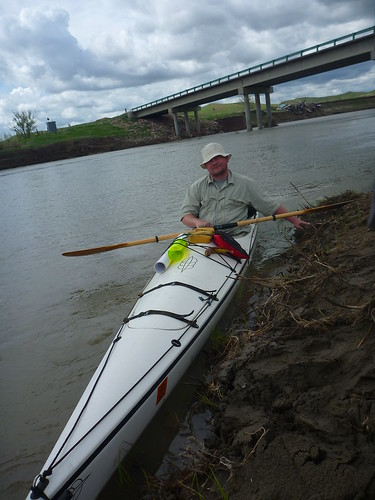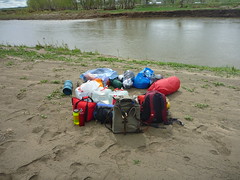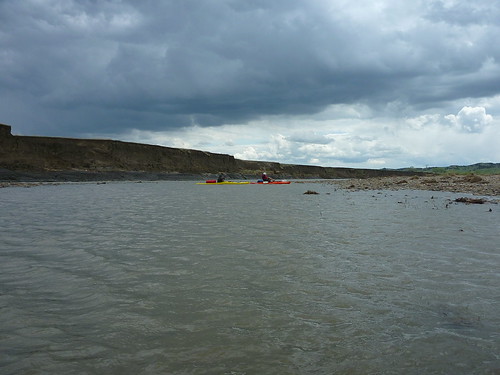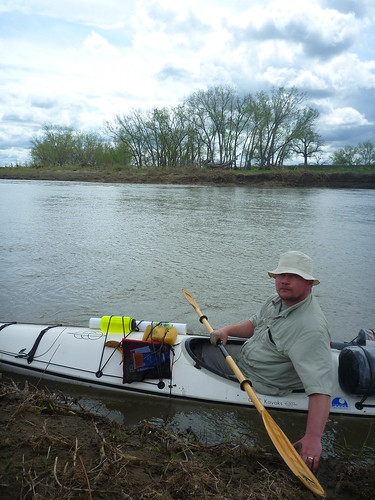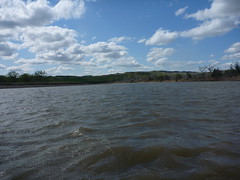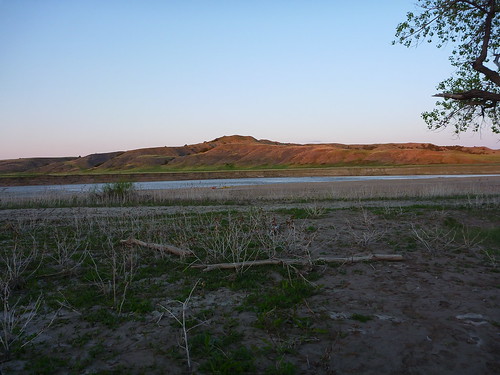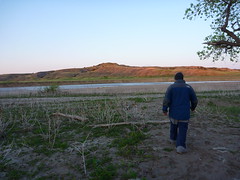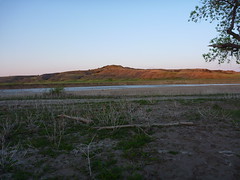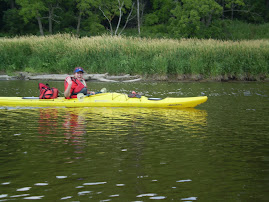We had a nice night of camping the second night - this time along the Cheyenne River.
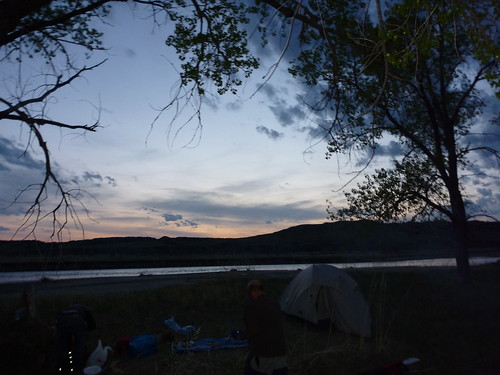
Caleb was right: We never suffered for a need of fuel for our fire. We could find all sorts of logs, some jammed into other trees from the recent flooding.
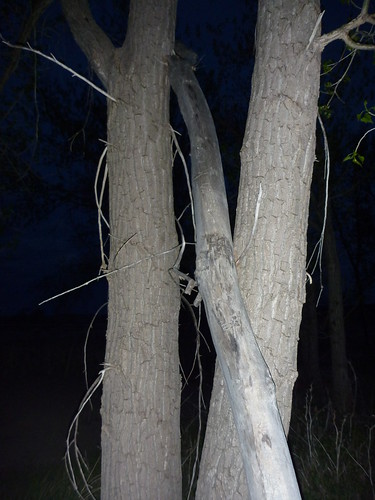

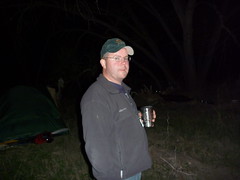
We awoke on Sunday - Jim led the way on getting up and at them - to another glorious morning in West River, no wind, mild temps, and another boat-load and go ... we were going to make our noon hook-up time at the SD Highway 34 Bridge.

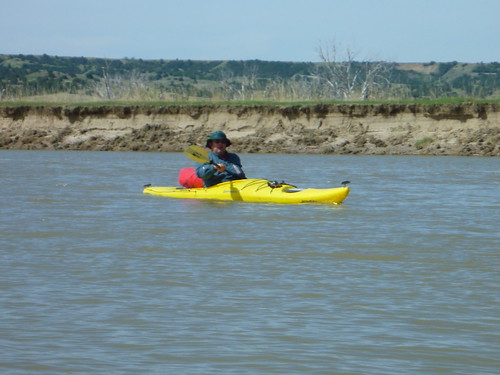
We were making good time, but it wasn't long before we realized we would be late. Had we put in an extra hour before camping each night, perhaps we'd have been closer. Could have been the wine at night ... or the need to sleep in a bit, after all, we were on vacation.
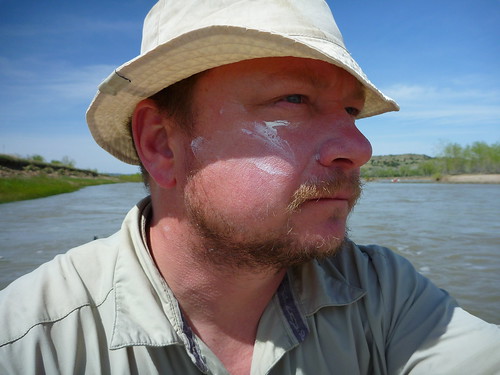
We called a halt even though we were running behind and luckily we got a signal on a phone, texted Caleb, and had him meet us at the Four Corners Bridge instead of the one at 34. We were all pretty clueless as to how easy/hard it'd be to take out there.
It was not the former.
We originally went to the left side (west) of the bridge, but Caleb hollered down to come to the other side at the last minute. Brian and Jim made it but I was caught up in some shallows and had to hand-fight my way back into the channel. From start to finish - challenges.
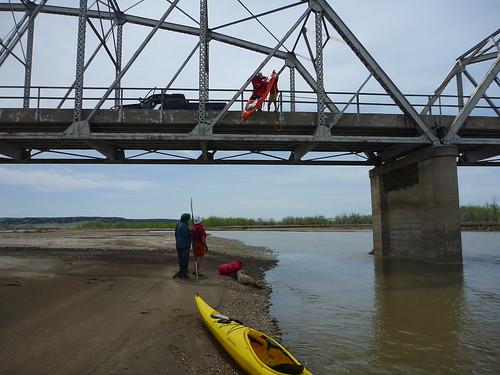
Since it was almost a quarter mile from the water to the ends of the bridge (showing just how high the Cheyenne can get) we opted for a tow strap extraction.
It worked slick with the dry bags and packs ... but then up the boats had to go.
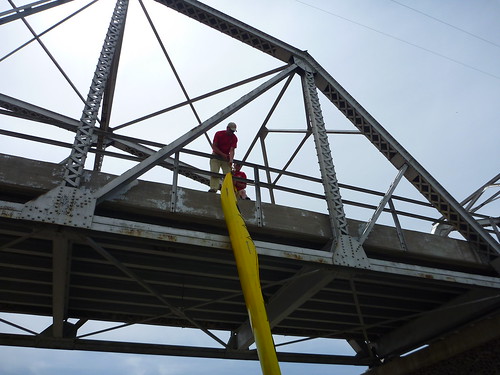
Chris and Caleb showed those SCUBA diver muscles and after the first two boats went up, it was time for my slightly-longer, heavier fiberglass job. No photos - it was hard to watch. I am sure it would have survived a fall, but alas, not fun to imagine as we watched them fight it up over the edge.

Then we were off - back to Pierre - then back to Elkton. It was a long trip - a great one though. Something to remember. We'd lost some gear, faced some challenges on the water and in the wild, but we made it home with stories, photos, and video.
Plastic boats are the way to go on gravel-bottomed trips like this. My glass boat sustained a few scars but she's fine; we needed her for her freighter-like qualities. Plus fiberglass can be buffed out and touched up ... no big whoop.
The twin MVPs of the trip are Jim and Brian. No doubt. Their combined stick-to-itiveness, good humor, patience - and of course plenty of hours of hard paddling, gear hauling, and wood gathering - really, it would have been impossible to make the trip without 'em.
I'm sure all three of us will continue to visit the USGS and consider the flow rates on this route. It's an amazing trip - seems like you go to Mars - but it's not even out of the state! We owned it, learned to respect it, and probably will never forget it.
Thanks, guys - and thanks to you kind reader of this blog. If you are ever considering this same route, feel free to contact me and I'll do everything I can to help.


